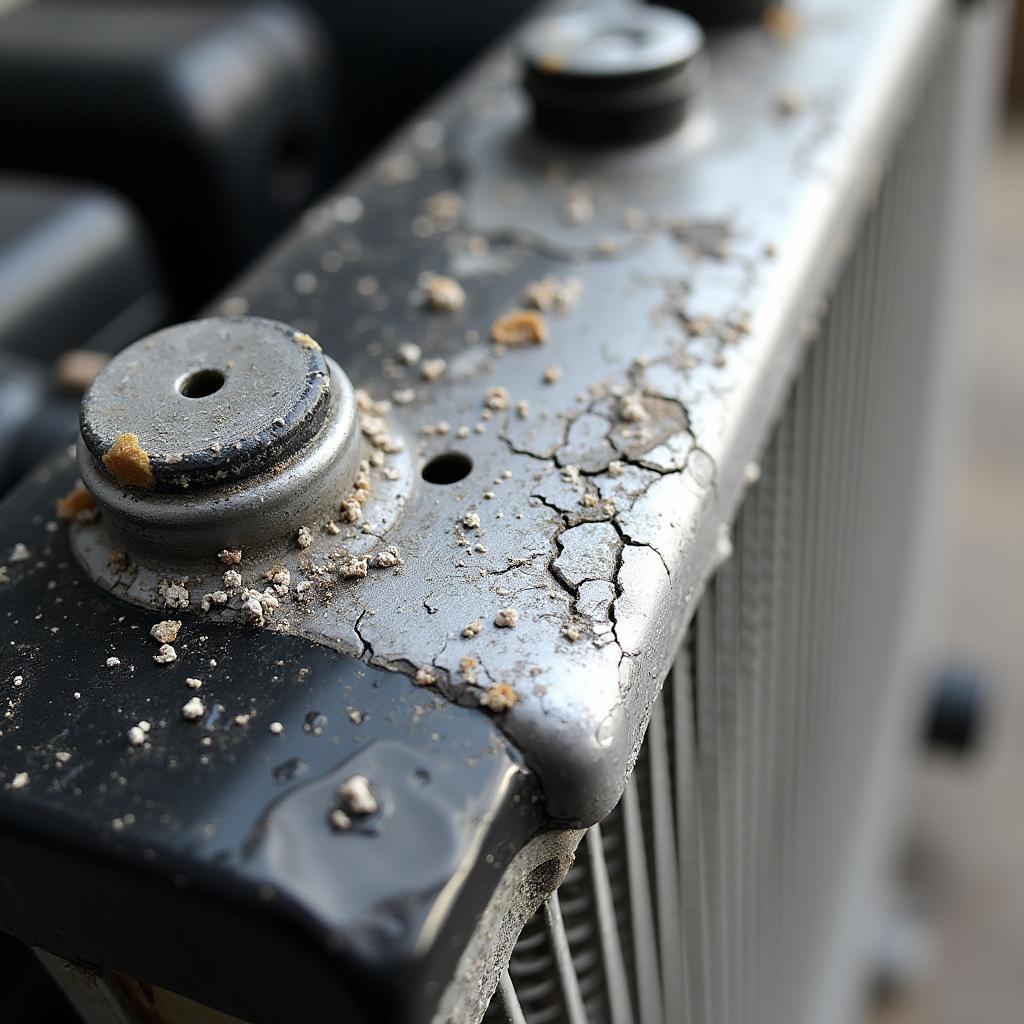You’ve probably heard of car body filler being used to fix dents and scratches, but can you use car body filler for repairing radiators? While it might seem like a quick fix, using car body filler on a radiator is generally not recommended. Here’s why:
Why Car Body Filler Doesn’t Work for Radiator Repairs
Car body filler, also known as Bondo, is a polyester resin-based substance designed to fill dents, smooth surfaces, and repair bodywork damage. It’s meant for external, non-structural applications and hardens into a solid, non-flexible material.
Radiators, on the other hand, are intricate systems of metal components that operate under high pressure and temperature fluctuations. Using car body filler on a radiator can lead to several issues:
- Heat Resistance: Car body filler isn’t designed for high temperatures. The heat from a functioning radiator can cause the filler to soften, crack, or even melt, leading to leaks and potentially damaging your engine.
- Pressure Sensitivity: Radiators experience constant pressure changes, especially when the engine is hot. Car body filler isn’t designed to withstand such pressures and can easily crack or break off, resulting in coolant leaks.
- Clogging: If the filler enters the radiator core, it can clog the delicate fins and tubes, hindering heat transfer and potentially causing overheating issues.
What to Use Instead of Car Body Filler for Radiator Repairs
While car body filler is a no-go for radiator repairs, there are effective and safe alternatives available:
- Radiator Epoxy: This is a specialized epoxy specifically formulated to withstand the harsh conditions of a radiator. It creates a strong, durable bond that can handle high temperatures and pressure, making it a suitable option for minor leaks and cracks.
- Cold Welding Compound: This two-part adhesive creates a strong, metal-like bond when mixed and applied. It’s designed for repairing metal components and can effectively seal leaks in radiators.
- Soldering or Brazing: These methods are more involved and require specialized tools and skills. They involve melting a filler metal (solder or brazing rod) to create a strong, permanent bond. This is often the best solution for larger leaks or repairs requiring high structural integrity.
When to Consult a Professional
While minor radiator repairs can be done at home with the right tools and expertise, it’s often best to consult a professional mechanic for the following situations:
- Extensive damage: If your radiator has suffered significant damage, such as large cracks or a complete rupture, it’s best to leave it to the professionals.
- Complex repairs: Repairs requiring soldering or brazing often necessitate specialized equipment and skills, making it advisable to seek professional assistance.
- Lack of experience: If you’re unsure about the repair process or uncomfortable working on your car’s cooling system, it’s always safer to consult a mechanic.
Remember, a properly functioning radiator is crucial for your car’s engine health. Using the wrong repair materials or methods can lead to more severe problems and costly repairs down the line.
Conclusion
While the idea of using car body filler for repairing your radiator might seem tempting for a quick fix, it’s essential to understand that it’s not a viable solution. The heat, pressure, and potential for clogging make it unsuitable for such applications. Opt for specialized radiator repair products like epoxy or consult a professional mechanic to ensure a safe and lasting repair. Remember, taking care of your car’s cooling system is crucial for preventing engine damage and expensive repairs in the future.



